Just outside Paddington is a vast building site – turning a run-down industrial area and old railway depot into a major HS2 railway station.
It’s a project that’s on a similar scale to the London Olympics in size, using a single impetus to regenerate an entire area, the arrival of a major railway hub. And yet, it’s just one, if surprisingly critical component of the mighty HS2 railway line.
HS2 is the controversial railway running through the country, but it’s largely controversial because most people don’t really understand why it’s needed. And that’s candidly a failing of HS2 themselves and their political masters.
A railway costing as much as HS2 could just to shave 35 minutes off a trip to Birmingham is never going to be popular. Even if with journey times of just 49 minutes, it could actually end up faster to get from Birmingham to Heathrow than from some parts of London to Heathrow.
But is it worth it?
It’s certainly a factor as Heathrow is a major hub airport for the UK and some flights only leave from Heathrow, so people who have to travel down to London will undeniably benefit from the new railway. More usefully for Londoners, it’ll become viable to fly from Birmingham, where flights can be cheaper, and without the air congestion, it’ll be more reliable than Heathrow.
In that sense, HS2 is not one-way traffic, sucking people into London, but making it much more viable to push jobs and services out of London. As was previously written, there’s some evidence that a reliable rail link between London and the regions means companies can shift some work out of expensive London into the cheaper regions — if the rail links are reliable.
Not necessarily fast, which is nice, but more importantly, reliable. The reliable bit is usually more important for people. Can I reliably arrive at the meeting on time, at the football match on time, at the wedding on time?
And that’s the core reason for HS2.
It’s a badly named railway — and they nearly changed the name a couple of years ago to get rid of the problem — as the High-Speed bit is a very small part of what’s being built.
As most people what the billions are being spent on, and they’ll say something like “it’s to knock 20 minutes off a train journey”, and unsurprisingly, that’s doesn’t sound like it’s worth the money and disruption.
Yes, if you’re building a new intercity railway, it makes sense for it to be very fast, but that’s just a thin layer of icing on a much larger cake and not really the main thing that HS2 is going to deliver.
It’s capacity. Oodles of new capacity.
The biggest problem affecting the railways today is a lack of capacity to handle the surging numbers of people who want to travel by train. So something needs to be done.
Yes, they could upgrade the existing lines, but that was tried with the West Coast Mainline Upgrade, and it delivered a fairly modest upgrade at a massive £14.5 billion cost. It’s possible, but not ideal to upgrade the old lines, but it provides many more benefits to build an entirely new railway line.
And, as they learnt with other attempts to upgrade existing lines, it can cost more per passenger mile of benefit to upgrade than to build from scratch.
Building from scratch means we can take advantage of modern engineering to build new rather than bolt onto old, and often bolting onto old means demolishing vast numbers of houses and factories that are right up against the existing railway tracks. Building new means a better railway for faster more reliable services without the clutter of the old suburban services.
And what that new railway will do is suck away the intercity traffic from the older lines, releasing huge amounts of space for more frequent services to be added connecting the towns. That’s the real reason for HS2 — it’s to improve the regional connections.
How that happens is that if you’re running intercity trains on tracks also occupied by stopping services, you need long gaps between the slow trains so that the intercity trains aren’t held up by the slower trains.
At the moment, sharing the tracks means that local commuter services are reduced to ensure the intercity trains can get through – which is great for the big cities, but hardly ideal for the regional towns and cities who struggle to fit in a regular train service.
So HS2 is about providing more space for more trains outside the main cities.
So while understandably the attention is on the big city connections and the high-speed service — it’s more about the overcrowded daily commuter services getting less crowded because more trains can run, and being more reliable because a small delay on one train doesn’t snarl up the entire timetable.
And here in London, that’s why both Euston and Old Oak Common are about to be rebuilt.
At Euston, it’s about fixing the bottleneck on the approach to the station. The station has enough platforms, but not enough railway tracks to get in and out, so trains have to wait for space in the tunnels to get into the station. And back out again. That’s a huge impediment to increasing the numbers of trains that commuters from North London and beyond can use.
Building not just more platforms for HS2, but critically, the extra tunnels for those trains to use shifts intercity services to the HS2 line, releasing lots of capacity in the old tunnels for suburban services. If that doesn’t sound too important, then where’s the UK’s most congested train… it’s the 17:46 out of Euston which carries more than twice the number of passengers that it’s designed for. When completed, HS2 is expected to more than double the number of seats out of Euston station during peak hours.
HS2 may sound like it’s all about fast trains to Birmingham, but for Euston passengers, it’s really about providing more trains from Watford and Milton Keynes.
That requires more suburban trains to be built, but the UK if anything has a bit of a surplus of capacity in that area. The big problem is a lack of railway to put them on — and that’s what HS2 is aiming to solve.
More space for more trains for more commuters.
So while Euston is the focus, as the London terminus of the line, you might wonder what’s the point of Old Oak Common station just a few short minutes up the road. Is it just there to trigger redevelopments in the area?
No — it’s absolutely critical to the reason for HS2 — to improve connections between regions and increase capacity.
Without Old Oak Common (OOC), the HS2 trains heading into Euston will be full of passengers who then need to be soaked up by the Underground. Yet, it’s estimated that as much as a quarter of the passengers using HS2 towards London won’t want to go to Euston.
They might be heading to Canary Wharf, or to Heathrow, or to Cornwall. The interchange at OOC means that people who don’t need to go into central London, won’t have to.
The OOC station will provide connections through central London on the Elizabeth line, to north and south London on the Overground, to Heathrow and Bristol, and Wales on the GWR mainline.
So rather than heading into Euston, then looping around on the Underground to Paddington then back out again, the OOC interchange avoids all that — for the benefit of the HS2 passengers, and reduces unnecessary congestion on the Underground to Paddington.
While we’re told that HS2 is all about North-South services, it’s also expected to reduce overcrowding on trains out of Paddington heading to Wales. And that demonstrates how HS2 is not just one fast line between some cities, but something that will improve rail journeys across the entire UK.
So, not far from Paddington has it happens, the Old Oak Common site is currently being cleared to receive its new stations.
A joint venture between Costain and Skanska is currently clearing area ahead of main construction starting. It’s a mix of old light industrial sites and the former Great Western railway depot.
It’s a grim-looking area, and even more so on a day when the heavens opened and dropped several months worth of rain in one afternoon. Meeting up with Alistair from HS2 and Tim from the Costain Skanska JV for a site tour, and an email ahead of a visit to bring an umbrella was not needed as the site is now so large – and on this day – so wet, that access is in a vehicle.
Three sites in total are needed to support the construction work — and when completed the two auxiliary support sites will be handed over for housing developments.
The old railway site has been largely cleared now. As you might expect for an old industrial site, they had to deal with asbestos in the goods sheds, but more serious were the decades of oil and lubricants that had soaked into the ground, especially in the service pits under the goods shed. A lot of that had to be dealt with by specialists and then disposed of carefully.
The rest of the site looks like huge piles of rubble, which is essentially what it is, but it’s piled up in graded piles to be used again. All the rubble has been having its metal rebar removed and been “cleaned” by local machines to remove contaminants and rather than shipping it off to a landfill, then shipping back clean aggregate later, they’ve got just about enough space here to store it for reuse.
And “just about” is the operative phrase, as the main HS2 site is surrounded by live railways – the Great Western service to the south and the Elizabeth line depot to the north and they need to squeeze the new station into this space.
A lot of the thinking going into the site at the moment is about how to ensure what they build today won’t block upgrades in the future. For example, although not part of the current plans, there will also be passive provision to add additional platforms for Chiltern Railway services to stop here in the future.
One thing you might not realise is that most of the images released recently of the new HS2 station at OOC are in fact, not the new HS2 station. They are the surface buildings for the Elizabeth line and GWR services, the HS2 platforms are underground.
They’re in the world’s second-longest railway box — the largest being in China, and only slightly larger, but as tempting as it might be to extend the OOC box a bit to nab the prize, that would be a vanity exercise. So HS2 is content with the title of second longest railway box in the world.
That box will serve several functions, as a station when finished, but in the early days as the launch site for the tunnel boring machines that will head towards Euston.
The spoil from those tunnels will be taken through a new side tunnel to one of the auxiliary sites, Atlas (after a local road) to be removed by the railway that just happens to be right next door. Although specifics are still being worked out, it’s likely that a lot of that soil will be used for landscaping along the HS2 route, to create artificial cuttings to reduce noise and provide bulking for land that will be regenerated as new woodlands and the like.
The Atlas site is huge, but also has a working cement supplier right in the middle who couldn’t be moved, so space is less than it looks.
This is where they will either store tunnel lining segments brought in from elsewhere or make them on site. It’s also the location where they took down two of the three huge yellow gantry cranes which had been a bit of a local landmark for many decades since they were last used.
The other location, known as the Victoria Road site, next to a former Waitrose warehouse, and here a huge shaft will be dug down and a gigantic crossover box created where the HS2 lines can cross if needed in the future. This will also be the launch site for the tunnel boring machines heading northwards out of London.
As there will be blocks of flats here when it’s all finished, they’re also investigating ways of taking heat out of the tunnels for the homes above.
They’ve taken over the neighbouring Waitrose site as well, to inspect delivery vehicles, and ensure they comply with safety regulations to improve cyclist safety and modern emissions standards for London.
In the early days, a handful of deliveries were turned back as the lorries didn’t follow the requirements, and since then, it’s not really been a problem. As with Crossrail, they’ve used the huge buying power of HS2 to force road safety improvements in the lorry trade.
While all this is going on, local businesses still need to keep working — such as the Lebanese restaurants and warehouses, the local residents nearby, and possibly oddest of all in this benighted part of town, the HR Owen service centre, which services luxury supercars.
Leading to the peculiar site of spotless supercars driving down roads occupied by huge building site vehicles.
Anyone who visits Old Oak Common or the nearby area cannot have failed to see how a formerly low-rise area is soaring skywards as property developers realise that this part of London will soon be one of the best connected in the country.
When finished, there will be a huge railway hub enabling people to head in almost any direction they want.
However, it cannot be denied that HS2 has been controversial.
It’s been badly branded as a high-speed line — derided as shaving a few insignificant minutes off trips for rich businessmen. No one ever seems to complain about making it easier for families visiting each other, it’s always the rich businessmen. Anyway, HS2’s so much more than that — and the impact is magnified many times over by the way it’ll improve the daily commute for vastly more people than will ever use HS2.
The costs are running rampant at the moment, but a project of this size was always going to find unexpected issues that simply couldn’t have been found in the relatively swift preparatory work done to get the line approved by politicians.
We should look at this as a long term investment.
At the moment, borrowing costs for government debt is at record low levels, and any government that didn’t take advantage of that to invest in infrastructure today for the future would be very odd indeed. Building HS2 today is much cheaper than building it tomorrow when debt costs will be higher.
Whatever the cost ends up being though, think about how long HS2 will last – this is not a generational project, but a multi-century investment. The original railways build in the 1830s are still in use today. Obviously, they’ve had investment in signals, power supplies, trains – but the underlying structures are still there, and still in use.
That’s what HS2 will deliver — a railway that will still be in use in 200 years time. It’s a long-term investment of the sort that we really should be proud to be building in the UK.
And as it’s going to last 200+ years, let’s do it properly.

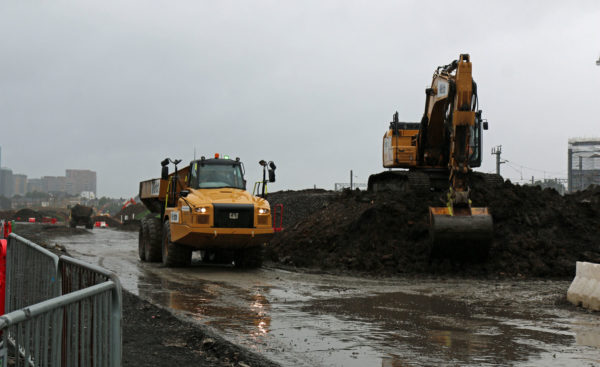
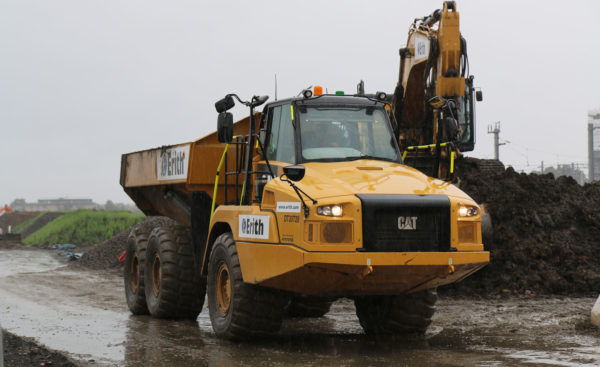
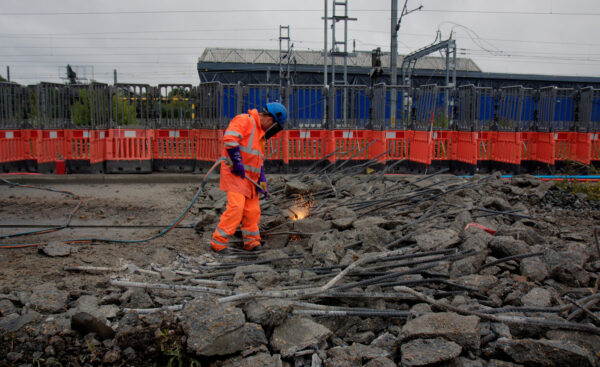
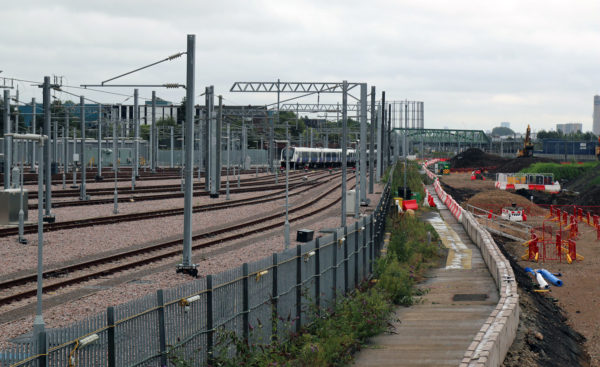
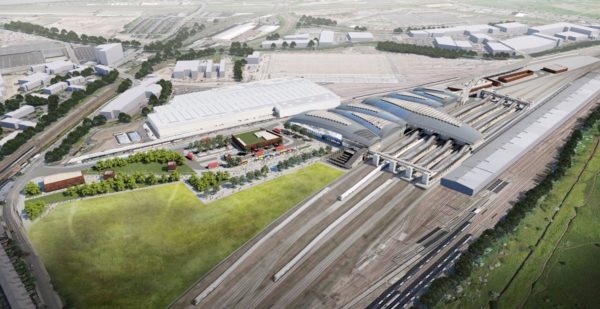
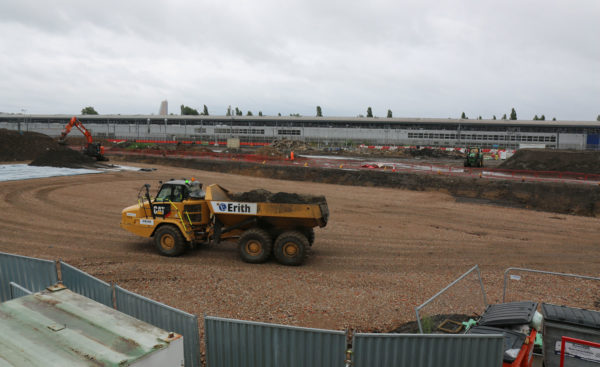
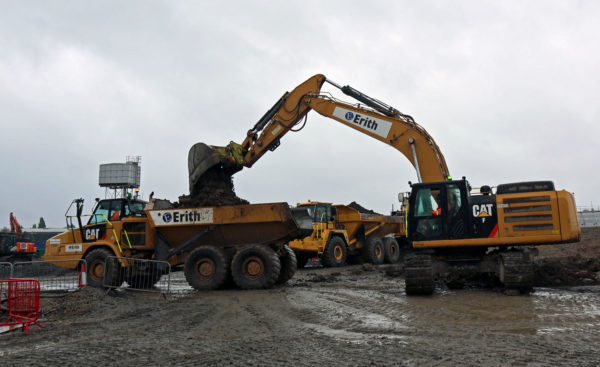
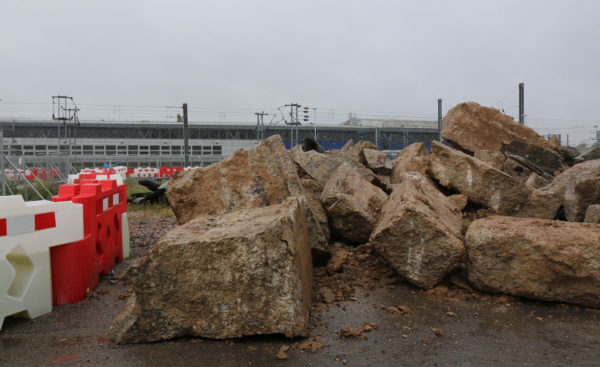
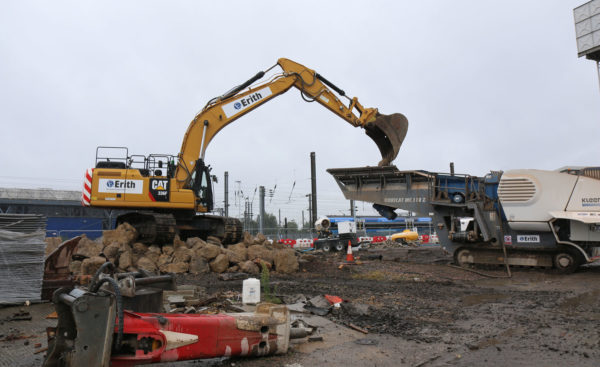






I came for info about Old Oak Common, but instead I got a tirade about how good HS2 will be 🤔
Really good, informative article.
A valuable piece which presents the case that politicians, daft and HS 2 have failed to make.
Excellent, well presented article – you should be running HS2’s PR
It’s a sales pitch certainly, but rather worrying when it’s not his money. The ‘biggest railway box’? Who cares – I didn’t think people thought like that any more.
Good article, explains better than most how HS2 will be a long term good.
Also big pictures of heavy machinery is always welcome.
Yes, good,informative article. A point though (by an HS2 supporter);
‘we’re told that HS2 all about North-South services, it’s also expected to reduce overcrowding on trains out of Paddington heading to Wales.’ Wouldn’t it increase overcrowding there if nothing else is done, by drawing more passengers to rail? Specifically, GWR to Old Oak, then HS2 to points north, becomes more attractive than CrossCountry Trains from the west country to points north. So less overcrowding on CrossCountry, more on GWR (NB but GWR to Bristol will soon double in frequency)
I suspect that most going to OOC will be goign on Crossrail – and GWR services west will be pick up only at OOC.
Half of Crossrail trains from the east are due to terminate at Paddington, so if capacity between Paddington and OOC really was a problem they could be extended.
Would people really want to pay up to double the price to travel from Sheffield to Bristol, especially when it means a change of train to one where you may not get a seat to Bristol? And probably take longer.
Top quality read.
A superb article from Ian, thanks!
The HS2 name no doubt came from HS1 but at least that railway had tge benefit of Channel Tunnel Rail Link ( CTRL) which exploded what tge Line was about .
HS2 is in fact West Coast Mainline 2 with elements of MML2 and ECML2 with its links to Sheffield and Leeds a far better description of what the new railway is about.
Your points about the importance of adding extra capacity in/out of Euston seem to be ignored by those who call for HS2 to end at OOC who fail to realise you need to relocate long distance trains at Euston to create paths for more local and regional services!
In fact I still think a Thameslink solution should be done at Euston where Overground DC services and some local London Midlands trains could serve a sub surface Station built as part of a new cross London through route linking to say Holborn, Waterloo etc.
OOC is where Canary Wharf was in the 1980s and look at how tgat has grown .
Much is being made about the cost of HS2 but most can’t tell tge difference between actual cost and cost with contingency fund and costs quoted are nearly a decade old and where can you buy something for the same price as 10 years ago ?
Well said. get this out on social media guys!
Ludicrous to suggest HS2 will still be running in 200+ years time. New modes of transport are rapidly developing and it will more likely end up like the disused Beeching lines, with a few feeble attempts to resurrect some sections. HS2 will stand as a monumental folly to 21st century engineering, admired for its foolhardy ambition when vital infrastructure across the nation could have been vastly improved from the eye watering cost.
Bit like telling The Romans their roads won’t be needed in 2000 years time !
HS2 is best way to upgrade existing lines given how many billions were spent on the WCML upgrade yet very little extra capacity was obtained . While HS2 will create new route out of Euston Station thus widening the throat at Euston to divert long distance trains onto HS2 freeing up capacity for more local services on existing routes. That’s why talk of cutting back HS2 defeats the big benefit that HS2 will provide at London end of WCML !
Given the fact that a large part of the London Underground is 150 years old, it is perfectly feasible to think that the routes created by HS2 will still be in use in 200 years.
Well-researched and well-written post. Here in California the high speed rail between Los Angeles and San Francisco is just as controversial. Some of us can be so short-sighted.
So many changing reasons to justify HS2 have been spun since its inception, wouldn’t be surprised if it ended up running in a circle.
Long time HS2 watchers have always known it is a capacity project. Go back to the 2009 command paper, watch some of (then) SOS Patrick McLoughlin’s speeches in Parliament, listen to Andrew McNaughton before the Bill Committee and elsewhere – the list of sources is endless.
The shifting stories and “spin” comes from the anti-HS2 NIMBY pensioners casting around for a “killer argument” to support their assertion that HS2 shouldn’t be built near them and diguise their NIMBY’ism (sometimes even from themselves.) The arguments they advance change every week and thus far none have stuck.
It doesn’t help that the press and BBC (“educate, entertain and inform” – yeah right) spin the story differently every time they get the hatchet out. It would be useful if such organisations engaged transport journalists that actually know something about transport, let alone HS2. But education and information is not the journo’s aim – they are trying to sell their papers and need to pad out the space between the adverts with something to get their readership fuming.
Old Oak Common will be extraordinarily well connected…the real challenge is how to make it work as a place that people actually want to be in.
Unfortunately, a major issue is the Crossrail depot. It was finished quite recently, and was very expensive. Although otherwise a lot of sheds and sidings are being removed to make way for major development, with Crossrail it’s there to stay (at least in the short to medium term). At one point there was the plan to deck over it and develop the whole thing, but that only works if everything else (all the other buildings, streets, station entrance etc.) is up at the same level. Unfortunately the HS2/Crossrail station is at grade level…meaning that when you walk out of the fancy new entrance you’ll be confronted by a great big industrial depot shed. The renders even show this (although they try to play it down).
A big opportunity has been missed, and there doesn’t seem to be an easy solution to remedy now. Potentially one could built a higher road and retrofit the station to be effectively deeper, but if other buildings have already developed then you’re stuck. The only real option is to one day remove the Crossrail depot completely, to some other location. This would be expensive – particularly given recent cost troubles, of course – but I can’t think of any other way to solve it…
Terry Farell called it “London’s worst c*ck up in 50 years”, and I can see why.
The Crossrail depot is so environmentally friendly so quiet not a problem. Was originally planned to be at Brentwood in Essex.Euston has poor tube connections. Euston Square should be moved closer to the mainline station
I have a couple of comments about this article.
My objection to HS2 is not the concept in itself but the fact that it is using old technology when there are far more environmentally friendly and cheaper methods that could have been used. Maglev is a great example, If we had gone with that, it would have allowed us more easily to avoid environmental catastrophes which we are inflicting on the country with HS2. Why have we gone with a technology that really requires us to build in straight lines? While Maglev naturally prefers straight lines, there is far less effect as the Minami Alps service being built in Japan underscores.
The other concern is the blasé way the author rights about the planting of new trees as though that replaces the complex ecosystems developed over thousands of years which will be ripped up with a huge and negative effect on our environment. Again, a move to a more up to date, greener and cheaper solution would have been more sensible.
You have missed the major point of the article. HS2 is about about adding capacity to the existing network and HS2 trains will go much further than just the HS2 network. Maglev would be limited to a few point to point flows.
Also Maglev is just as disruptive to the environment as standard railways, but costs a lot more to build and run. If you put maglev in tunnel it is argubly better for the environment, but that argument also applies to rail – there are already some very long tunnels on HS2 for that reason. As for straight lines, maglev is just the same as rail – if you want a particular speed, that drives the geometry of the track.
In short, maglev is more expensive to build and operate, has at least the same environmental issues, and doesn’t provide connectivity solutions.
And before anyone mentions Hyperloop, that is even worse than maglev on all counts.
No pics of all the new Elizabeth trains lined up and patiently waiting?
Agreed that HS2’s raison d’etre was not well communicated. A brief glance at a map will show people that most trains from Euston go right past OOC and Paddington on their way north, so an interconnection between the two would seem to be a no-brainer (I believe there already is a low-use connection).
One wonders if the Powers That Be cannot think past “Anyone who needs to get toward Birmingham must work/live near Euston”? Or is it – “Those trains always came into Euston and that may never be changed?” Bit odd.
Surely the ability to run some services from Euston to Reading or Paddington to Birmingham (etc.) has value? Or at least to provide the ability to change at OOC instead of fighting the hordes at terminal stations? It is 2019, I suppose. Things were so much more advanced in 1819.
This is a puff piece with sections lifted from HS2 promotional literature and I am most disappointed. The gross errors in favour of HS2 that litter your article have been disproven on technically based sites, e.g. beleben.wordpress.com for one.
As for slagging off Waitrose because they found a lorry or two that wasn’t perfect is so off the point that you should be careful that they don’t demand a retraction and apology of some legal description.
Open your eyes, look at the hundreds and thousands of homes and businesses that have been blighted along the “route”, and the shameful way these owners are being treated. The slavish
waste of money on consultants. The promotional start of building work in Birmingham Curzon Street where they hired in a digger and a pile of dirt to pretend “building” had started. Do I need to go on.
Oh, one last thins, my daughter is studying in the Midlands and can get to Coventry in 1hr 8min at present with three trains an hour. Post HS2 her service would be cut to two – check it out…
Please retract this entire article. Thank you.
I said that HS2 have taken over the Waitrose site, and it was HS2 who sent a few lorries back for breaching their conditions — just as any contractor would expect.
Maybe before slagging off the article, you could try reading it properly.
Beleben is hardly an authority on railway matters. His “facts” are so frequently just flat our wrong that no-one takes him seriously. E.G. the WCML upgrade in the nineties only cost 2.5bn. Really? I wonder why the BBC documentary on it called it the “10 billion pound railway.” Mostly he gets out his crayons and just makes stuff up.
Of course, anti-HS2 NIMBY’s casting around for some “evidence” to support their position love him as he says what they want to hear.
CheesePeas: It is not my job to defend Beleben, however, I looked for evidence to support the “error” you claim he made. I found an article from July 5, 2013, where he makes the difference between modernisation and upgrade within the total cost.
He makes it clear that modernisation is where the priorities were, and quotes Richard Branson from 2009:
“Of the £9bn spent on the line, only £2bn was for upgrade work. The remaining £7bn was spent to renew a railway that had no investment since the 1960s […]”
Likewise, from my own memories over those years the key aspect of the work was always about modernisation, as much of the route was life expired, etc. Therefore, this was widely known from the publicity given to the delay after delay.
Thus, and unfortunately, you are not correct as you are comparing one element only. Both Beleben and yourself agree that £2Bn/£2.5Bn was spent on “upgrade” work. However, you have forgotten about the much more significant modernisation element.
Note: Beleben quotes from Richard Branson as the true numbers are opaque (as besets the industry), and he is only trying to be as accurate as he can be, and, sadly, the opposite of what you imply.
Beleben West Coast
We learn that in this Boris HS2-sceptic government, an independent review has been commissioned under Douglas Oakervee and Lord Berkeley (the latter already very sceptical of HS2).
Despite the demolition going on around Euston and the major land clearance at both Old Oak Common and Birmingham Curzon Street, the DfT’s announcement plays these down, saying ‘Limited, largely preparatory works, on the project will continue in parallel with the report’s work’.
Preparing the ground for an unfavourable report and a halt to the whole project ? I do hope not.
THANK GOODNESS, thank goodness. They’re back. I was beginning to despair (comments passim.) but just in time, they for whom time and life speed ahead occasionally beyond their own comprehension slam the brakes on to visit.
Frankly I’m grateful for more than one side of an argument being, err… argued for in this era of “my way or the highway,” compromise/breakfast is for wimps nonsense.
I confess that I haven’t grown up enough yet to rise above the schadenfreude occasioned by a forthright opinion containing the seeds of its own destruction purely because the author sped through the text without giving it the extra what, one minute necessary to get your drift guv?
I, too add my appreciation of your consideration of the longer game and the bigger picture Ian. Thanks.
I often hear “The railways are full” but I work next to the midland mainline in Sheffield and the railway seems pretty empty to me. Is it the railways that are full, or the stations? A quick look at a live map https://raildar.co.uk/radar.html shows how the south east railways carry more trains than the northern ones.
I had come to believe that HS2 should be scrapped, in favour of smaller projects elsewhere.
However, this is the first time that I’ve actually heard an argument in favour of it, that resonates.
Very interesting.
A great read indeed – what I fail to Understand in this massively overcrowded Island is why more people are not Lobbying for some of the 000’s of miles closed by Beeching to be reopened! 66% of the routes closed are still clear – Maybe that could form the basis of your next article – I look forward to it!
There already is a government scheme looking at reopening closed lines – but this “massively overcrowded” island is mostly rural and empty, and it’s very difficult to pay for public transport in lightly populated parts of the country.
Spending money like water in London to support Canary Wharf! It make more sense to have a little box under Leeds City Station to have a Metro to support a decentralised second financial centre in England. A bit like a Germany with Dusseldorf,Frankfurt and Munich
Ha Ha flights are never cheaper than from London.
“When finished, there will be a huge railway hub enabling people to head in almost any direction they want.”
Apart from directly to Paris, Amsterdam etc., that is.
Why penny-pinch on a project costing over £100,000,000,000?
If only someone would make the HS1 trains stop at Stratford International so we didnt need to pay twice just to get to St Pancras just to travel out again!